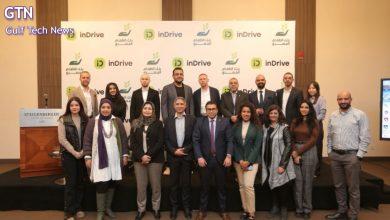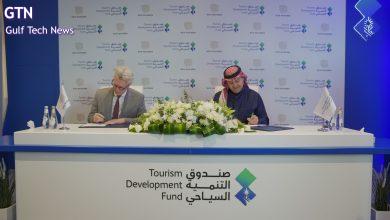LEEDing the Way to a New Era of Greener Real Estate

Against the backdrop of COP 28 in the UAE, Savills Middle East has launched its latest report on the current real estate sustainability landscape. This report takes a look at how various real estate sectors, including residential, offices, industrial, and retail, are responding to growing calls for sustainability and where the Middle East stands versus global cities.
The UAE is located in a water-scarce, arid environment, with 85% of the population and over 90% of the infrastructure located within a few kms of the coastal areas. The challenges and opportunities are more pronounced here and in the wider region, compared to other parts of the world.
“The Government is utilising modern technology to address these challenges and, in the process, creating new economic sectors in the form of green products and services, including the world’s largest single site solar park based on the Independent Power Producer (IPP) model, Mohammed bin Rashid Al Maktoum Solar Park – it is estimated to save over 6.5 million tons of carbon emissions annually once completed. These efforts are likely to lead to a gradual transition to cleaner sources of energy while creating new sectors for economic growth,” said Swapnil Pillai, Associate Director – Research at Savills Middle East.
Real estate and sustainability
The real estate sector is an important driver of the UAE economy. It has seen phenomenal progress over the last few years but is still at a nascent stage of growth. As a sector, real estate globally is associated with significant carbon emissions as part of its development and operations.

Current certifications – Local and global
The UAE has implemented various policies and frameworks in recognition of the importance of sustainability in real estate. Those certifications include the Estidama Pearl Building Rating System (PBRS) in Abu Dhabi, the Al Sa’fat green building rating system, and international green building certification schemes such as LEED—an assessment framework for healthy, energy-efficient, and financially saving green buildings—demonstrating the country’s commitment to global sustainability standards and fostering a green economy while also supporting long-term sustainable growth.
Beyond LEED, other certification schemes have achieved wide recognition and application, including NABERS, the National Australian Built Environment Rating System, and BREEAM, the Building Research Establishment Environmental Assessment Method.
Challenges and opportunities across real estate sectors
Office
LEED-certified office stock in Dubai currently only constitutes 22% of the total office space, revealing a dearth of green-certified office buildings. This also highlights another challenge for the market, wherein the region largely relies on international certifications despite the region’s unique environmental challenges.
Paula Walshe, Director – Transactional Services at Savills Middle East, said, “A large share of the green-certified buildings in the country are located across established office districts such as the DIFC, Dubai Design District, EXPO City in Dubai, and ADGM in Abu Dhabi. These assets have seen a significant increase in occupancy levels over the last few years, with a double-digit annual increase in rental values during 2023, as corporates in the region prefer to be located in Grade A developments across these districts. While green certifications of such buildings have not been the primary deciding factor in taking up space, we are noticing an uptick in requests from both global and local corporates for certifications such as LEED and/or WELL, the certification scheme that focusses on occupant health and wellbeing.”
Residential
Similar to other markets such as the UK, sustainability has moved up the agenda for an increasing number of residential developers in the region.
“While the architecture and construction of the residential properties may differ from those of the UAE, the challenge for the occupants of many houses in the UK is not only keeping them warm during winter, but they too need to adopt measures to prevent overheating in the summer,” said Dr Kat Martindale, Head of ESG Research and Director at Savills Earth.
In our region, new schemes currently under development across Sharjah, Abu Dhabi, and Oman incorporate modern methods of construction while focusing on sustainable sources of energy, water recycling, and rainwater harvesting within the community, and also offer urban farms as a way to support local food production and cut down carbon emissions across the supply chain.

Retail and Industrial
Meanwhile, the retail and leisure sectors have been slow to adopt sustainability practices, and efforts are needed to improve building efficiency, performance, and operational use. Currently, less than 10% of the retail stock across the UAE is green-certified.
Tenant activities account for 80% of the asset’s carbon emissions, but there are still avenues for landlords to upgrade, including smart lighting in common areas, smart water metres and regulators, rooftop solar panels, and efficient waste management and recycling systems.
That is not the case with the warehousing sector, as it stands out as a quick adopter of sustainability practices. When compared to other real estate asset types, building a warehouse takes less time and is less complicated in terms of layout and general design. It is a segment of real estate that can be easily refurbished, and newer developments can be made more sustainable.
Is retrofitting the answer to making older stock more sustainable?
It is clear that our region is behind, with the number of assets that remain below the required criteria still stubbornly high. While rates of retrofitting vary between sectors, the two that have the most engagement in personal terms, commercial and residential, attract the most attention, but also very pertinent challenges.
“Barriers to delivering retrofitting include a lack of skilled installers, lack of materials, passive political and policy frameworks, few incentive schemes, and, the most frequently cited obstacle, the financial cost of improving a building’s performance. Sometimes, the potential to retrofit some buildings will be hampered by something as simple as the architecture or heritage of the asset,” adds Martindale.
However, the financial aspects of greener and greening properties can prove the most motivating of forces, almost regardless of sector.





